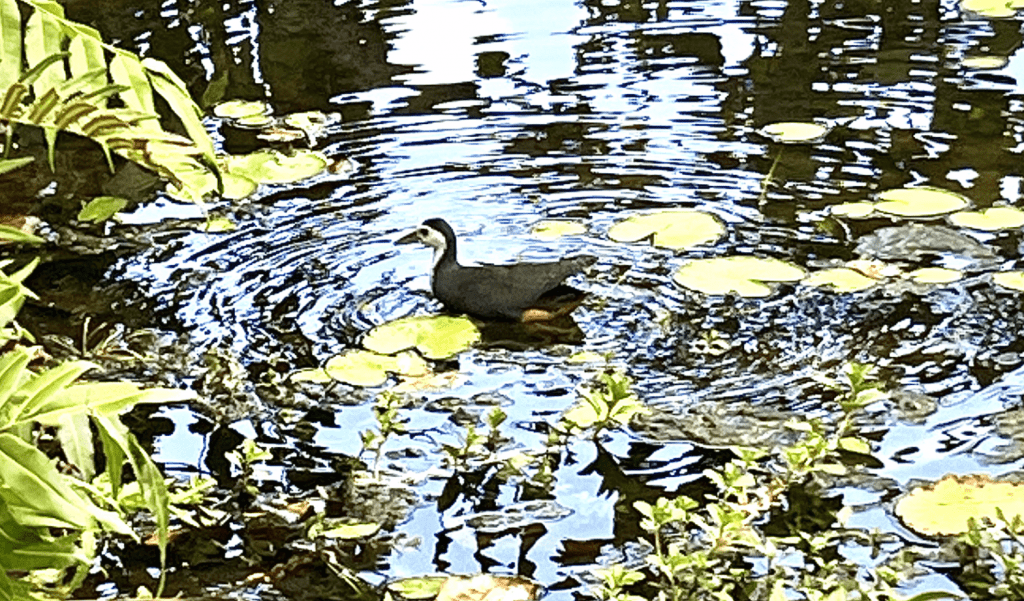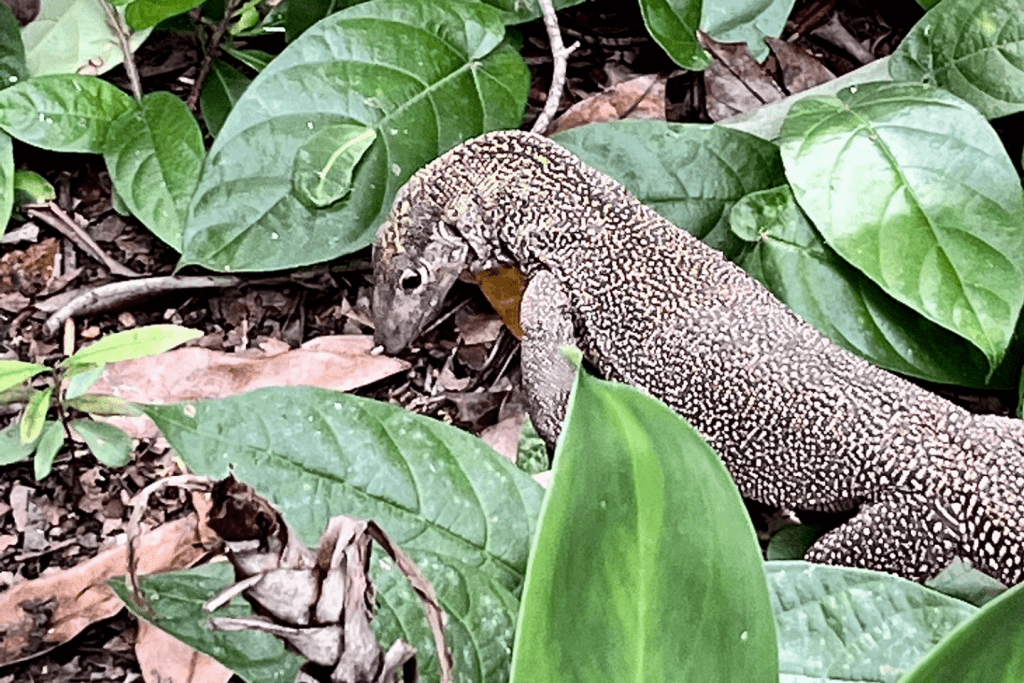Freshwater Wetlands as a Vital Habitat for Native Wildlife Species

Figure 1: The Oriental Magpie-Robin and its melodious birdsong has made a resurgence (Taken at SBG by Alicia Tiu)
With the lightning-fast speed of development in Singapore, it is hard to imagine how many hundreds of native wildlife species have been driven away or extirpated due to loss of habitat. As such, it is remarkable to see the development of conservation sites such as The Learning Forest that have resulted in the re-emergence of native wildlife populations [fig. 1]. Most notably, the Learning Forest features the Keppel Discovery Wetlands [fig. 2], one of the few freshwater wetland ecosystems left in Singapore. As such, the Wetlands offer a rare opportunity for humans to observe native freshwater swamp wildlife. I recently visited The Learning Forest and Keppel Discovery Wetlands on a field trip with Prof Gretchen and my group, Adriana, Jocelyn and Sayori.

Figure 2: Map of The Learning Forest and Keppel Discovery Wetlands (Credit: The Straits Times)
The Keppel Discovery Wetlands is an attempt to restore the freshwater wetland ecosystem historically found in this area. One of the notable features of these wetlands includes the presence of water bodies, not natural to freshwater wetlands [fig. 2]. The open water ponds were developed likely because it was more aesthetically attractive. While this design choice causes the environment to burn up in the afternoon sun, the lake’s waterlogged banks still provide spaces for wildlife to forage, breed, and nest. Combined with the consistently warm and humid tropical climate of Singapore, these abiotic conditions make life suitable for many tropical wetland species.
How Exactly Do Freshwater Wetland Ecosystems House Native Wildlife?

Figure 3: Shallow wetland water bodies as a space for White-breasted Waterhen to forage (Taken at SBG by Alicia Tiu)

Figure 4: Can you spot the waterhen amongst the underbrush? (Taken at SBG by Alicia Tiu)
The freshwater wetlands offer habitats to a plethora of creatures, including the White-breasted Waterhen. Waterlogged soils are home to worms, aquatic snails, and plants, all of which make up the waterhen’s diet. The waterhen itself has also adapted to forage in this type of environment: its long legs allow it to hold its body above the shallow water [fig. 3]. This makes the waterhen perfectly suited to forage in the freshwater wetland ecosystem. Moreover, dense underbrush along swamp banks offer waterhens shelter and protection from larger predators. It was cool to spot a little head pop out from under the foliage while I was at the Botanic Gardens [fig. 4]!
It is easy to see how wetlands provide suitable habitats for other wildlife species, but what about further away from the water? In The Learning Forest, the NParks staff intentionally add leaves to the leaf litter to restore the humus layer of the soil – the layer of organic material that promotes plant growth. This biotic factor not only supports the growth of countless wetland and forest plants but also serves a secondary purpose – providing spaces for wildlife species to forage. I was incredibly lucky to see a Clouded Monitor up close, scratching through leaf litter and looking for worms to eat [fig. 5].

Figure 5: Clouded Monitor foraging in leaf litter (Taken at SBG by Alicia Tiu)
While walking from the Keppel Discovery Wetlands to the SPH Walk of Giants (an area that more closely resembles a tropical rainforest), I could feel a stark temperature difference – the rainforest felt much more comfortable. This is likely due to the open water concept in Keppel Wetlands versus the dense vegetation in the Walk of Giants.
Imagine, the Discovery Wetlands could house even more wildlife species if the open lake was converted to a proper freshwater swamp ecosystem. Just as how dense underbrush shields the White-breasted Waterhen, proper restoration of vegetation will reduce the amount of direct sunlight and visibility, better protecting small wildlife species from predators (and human visitors).
Written by Alicia Tiu Yuxuan (E0324889)
Leave a Reply